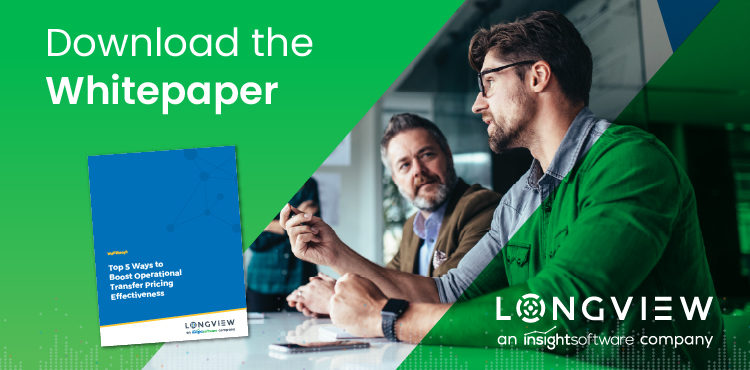Transfer Pricing Methods and Best Practices

What is Transfer Pricing?
Transfer pricing involves setting the cost for goods and services sold between related business entities within the same corporate group. For instance, when a subsidiary company provides goods or services to its parent company or another subsidiary within the same group, the price set for these transactions is known as the transfer price.
Businesses rely on transfer pricing to ensure that transaction pricing between related parties is comparable to fair market value. This process, which is conducted according to the transfer pricing guidelines set by the Organization for Economic Cooperation and Development (OECD), requires the governing entity in this transaction to choose a pricing method that offers the best estimation of this fair market value.
Choosing a transfer pricing method is a top-down strategic decision that benefits from using tools and resources designed to help businesses identify the most advantageous and appropriate methods for their transfer pricing strategy. They are also used in advance of negotiating new advance pricing agreements (APAs). Here’s a look at the different transfer pricing methods these organizations can consider, as well as additional information to improve calculations that support this methodology.
How Transfer Pricing Works
Transfer pricing involves setting prices for transactions between subsidiaries of the same multinational corporation to ensure these transactions comply with the arm’s length principle, aiming to prevent tax evasion and profit shifting. It requires meticulous documentation and adherence to international and local tax laws, with methods and strategies scrutinized by tax authorities to ensure fairness and transparency.
Setting Transfer Prices
Companies set prices for goods, services, or intellectual property traded between their divisions in different countries. These prices are determined using various methods, including comparable uncontrolled price, resale price, cost plus, profit split, and transactional net margin methods, depending on what’s most appropriate for the transaction type.
Regulatory Compliance
Transfer pricing is heavily regulated by tax authorities worldwide to prevent profit shifting and tax avoidance. Companies must comply with the transfer pricing rules established by the countries in which they operate, adhering to the arm’s length principle to ensure transactions are priced as if they were between unrelated parties.
Documentation and Reporting
Enterprises must prepare extensive documentation to justify their transfer pricing policies. This documentation often includes detailed descriptions of intercompany transactions, the methods used to set prices, and the rationale for their selection. The aim is to provide tax authorities with transparency into how prices are determined, ensuring compliance with local laws.
Adjustments and Disputes
If tax authorities determine that transfer prices do not comply with the arm’s length principle, they may adjust a company’s taxable income, leading to additional tax liabilities, penalties, and interest. Companies may dispute these adjustments through appeals or litigation, or they may seek to resolve disputes through mutual agreement procedures (MAP) under tax treaties.
Strategic Planning
Beyond compliance, transfer pricing is a strategic tool for global businesses. It can influence where profits are reported, affecting overall tax efficiency and strategic investment decisions. Companies must balance compliance, tax strategy, and operational efficiency when setting their transfer pricing policies.
Transfer Pricing Methods
Regardless of which transfer pricing method you use, your business can use a transfer pricing tool to alleviate the manual burdens of this accounting process. Software-based transfer pricing also allows you to monitor the success of each pricing method you use, and gather insights to help you guide your transfer pricing method strategy going forward.
When choosing a transfer pricing method, you also need to go with the option that offers the greatest fiscal benefit to your organization while also offering a defensible pricing structure. Here are five widely used transfer pricing methods your business should consider.
Comparable Uncontrolled Price
The comparable uncontrolled price (CUP) method establishes a price based on the pricing of similar transactions that have taken place between third parties. When comparable uncontrolled prices exist, this is a reliable transfer pricing method, and one of the most difficult to challenge.
The challenge of this pricing method is that comparable transactions can be difficult to find. Even the addition of a few small variables can differentiate the cases enough to render the CUP method insufficient for establishing an accurate price based on the available information.
Cost Plus
When no market price is available to serve as a basis for pricing, organizations can use the cost-plus transfer pricing method to set a price by calculating the standard cost of delivering the relevant goods, and adding on top of that price a standard profit margin. The sum of these numbers can then be used as a fair transfer price for the transaction.
Resale Minus
The resale-minus method bases its pricing on the resale price of a product or asset sold to a third party. But that resale price is then adjusted by subtracting the gross margin, along with additional costs associated with the purchase.
After these costs are deducted from the resale price, the resulting figure can be used as an arm’s-length price to guide the transfer pricing between two entities.
Transactional Net Margin (TNMM)
When actual transaction data isn’t available, enterprises can use margin levels to establish transfer pricing. The transactional net margin method (TNMM) or Comparable profit method, uses the net profits from another controlled transaction to establish a net profit that can then be applied when establishing transfer pricing for comparable, uncontrolled transactions.
Because actual transactions aren’t being used, this transfer pricing method offers extra flexibility in identifying transactions to compare to one another.
Profit Split
The profit split method is used when two parties are involved in the development of a product or some other venture in ways that make it difficult to examine each party on its own. Instead, the profit split method uses the profitability, or potential profitability, of a product or venture and develops a method of splitting profits that is fair to both organizations.
This pricing method comes with challenges, because it is based on margin levels, and the accuracy of its profit splitting may be up for debate. But in the absence of more concrete data or a clear division of roles between entities, this transfer pricing method can help parties arrive at a fair compromise.
Improving Calculations That Drive Transfer Pricing
No matter which transfer pricing method you use, the process is data-intensive. Enterprises need transfer pricing tools and solutions that improve the strength of their calculations. This is especially true given the guidance from OECD BEPS, scrutiny from Revenue Authorities, along with increased public scrutiny and the reputational risk that comes with transfer pricing that appears to be blatantly tax-avoidant.
Transfer pricing solutions like Longview allow you to effectively manage large volumes of data. You can then apply your methodology and measure your effectiveness or alignment based on what is actually happening with your business.
Intelligent data management solutions implement and enforce data-cleansing rules to validate the quality of the data driving transfer pricing. At the same time, this software helps define realistic measurements that can support transfer pricing and even assist in strategic decision-making and strategy adherence.
Effective transfer pricing software also improves data collection and management across multiple departments and entities—a crucial consideration for enterprise organizations dealing with complex data streams and equally complex transfer pricing challenges. Despite the complexity of the business challenges being addressed, the software manages to simplify transfer pricing processes for organizations by increasing automation and eliminating manual steps, allowing organizations to respond to new business challenges faster, and with greater accuracy and success.
Harness the Value of Intelligent Transfer Pricing
Transfer pricing methods enable businesses to create the framework for transactions taking place within the larger structure of a multi-entity corporation. But to ensure fairness for both parties, as well as to ensure compliance with regulatory laws, these transfer pricing methods need to be managed by an enterprise business solution that can create and enforce processes to organize data and support high-level strategic decisions around whatever transfer pricing method your tax advisers recommend while taking into account the pertinent tax metrics.
Eager for more transfer pricing tips? Check out our white paper, Top 5 Ways to Boost Operational Transfer Pricing Effectiveness.
